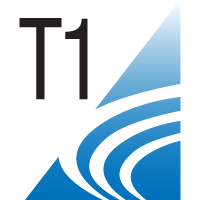Pediatrics (P)
LM407 - Increasing Access to School Hearing Screening Services for Children Living in Regional and Remote Locations Through Using Self-Administered Game-Based Testing

Mark Flynn, PhD
Chief Audiology Officer
Sound Scouts
University of Newcastle
Bar Beach, New South Wales, AustraliaDisclosure(s): Sound Scouts: Consultant/Advisory Board (Ongoing), Employment (Ongoing)
Lead Presenter(s)
Our service delivery model delivered a sustainable school-based hearing screening program in regional, rural, and remote locations, and especially for indigenous populations. Through gamification of hearing screening technologies we screened over 200,000 children, with 42% of tests for regional and remote populations.
Combining a game-based framework with a self-administered tablet-based program, accuracy and compliance were increased, and time per test reduced through screening children simultaneously. The use of speech-in-noise tests rather than pure-tones, differentiated between children with SNHL vs CHL vs speech in noise issues leading to more efficient and accurate referrals. We will discuss implementation into clinical practice.
Summary:
We are challenged to deliver sustainable and equitable access to school-based hearing screening for children in regional, rural, and remote locations, and especially for indigenous populations. Our data confirms that the rate of hearing loss amongst school children from indigenous and/or lower socioeconomic backgrounds is twice the rate as higher metropolitan communities. Therefore, action is urgently required to identify hearing loss and put into place interventions to “close the gap”.
Despite the success of universal new-born hearing screening, more children receive their first hearing aids during their first five years of school than during their first three years of life (Australian Hearing, 2020). In many cases, their transient CHL, unilateral and/or progressive hearing loss becomes apparent only when they have poor academic progress at school. Therefore, there is a clear need for new and innovative methods to screen for hearing loss in school children.
To address this need, a self-administered game-based technology was implemented to enable easy and reliable “on-site” hearing screening of children. Based on the relationships between the different tests, a child may be identified as either having a conductive hearing loss, sensorineural hearing loss, or a speech perception in noise pattern of deficit (Almufarrij, et al., 2022). Speech perception or auditory processing deficits were included, as the goal is for a child to understand the teacher in a typical classroom. Importantly, referral pathways can be implemented from the results, decreasing time and freeing resources in medical and audiological treatment pathways.
Based on 5,914 children screened in schools, a “refer” (i.e. result outside normal limits) was obtained on 9% of children. Of those retested, 40% did not pass the second screening, giving an overall double-failure rate of 3.8%. For schools in areas with a below-median socio-economic index, the double-fail rate was almost twice as high, at 7.3%.
Self-administered digital tablet apps using a game-like framework can be used to test hearing in schools. The ability to use speech-based measures against a psychometric function provides the ability to classify “refer” children into one of three categories (conductive, sensorineural or auditory processing) enabling specific and targeted follow up. In addition, we will discuss other applications such as the ability to monitor thresholds overtime which may assist in the prioritisation of treatment of children on hospital waiting list for intervention (e.g. PE tubes). The application in regional and remote locations has been demonstrated to be successful in Australia and the Pacific Rim.
We will share our clinical insights, including how school-based hearing screening could be further innovated in the future. The presentation will focus on ensuring a common understanding of the challenges for hearing screening programs and the potential of self-administered tests.
Learning Objectives:
- Identify the challenges in providing regional and rural based hearing screening programs in schools.
- Describe the benefits of game based digital solutions for hearing screening.
- Evaluate the clinical utility of self-administered hearing screening technologies.

